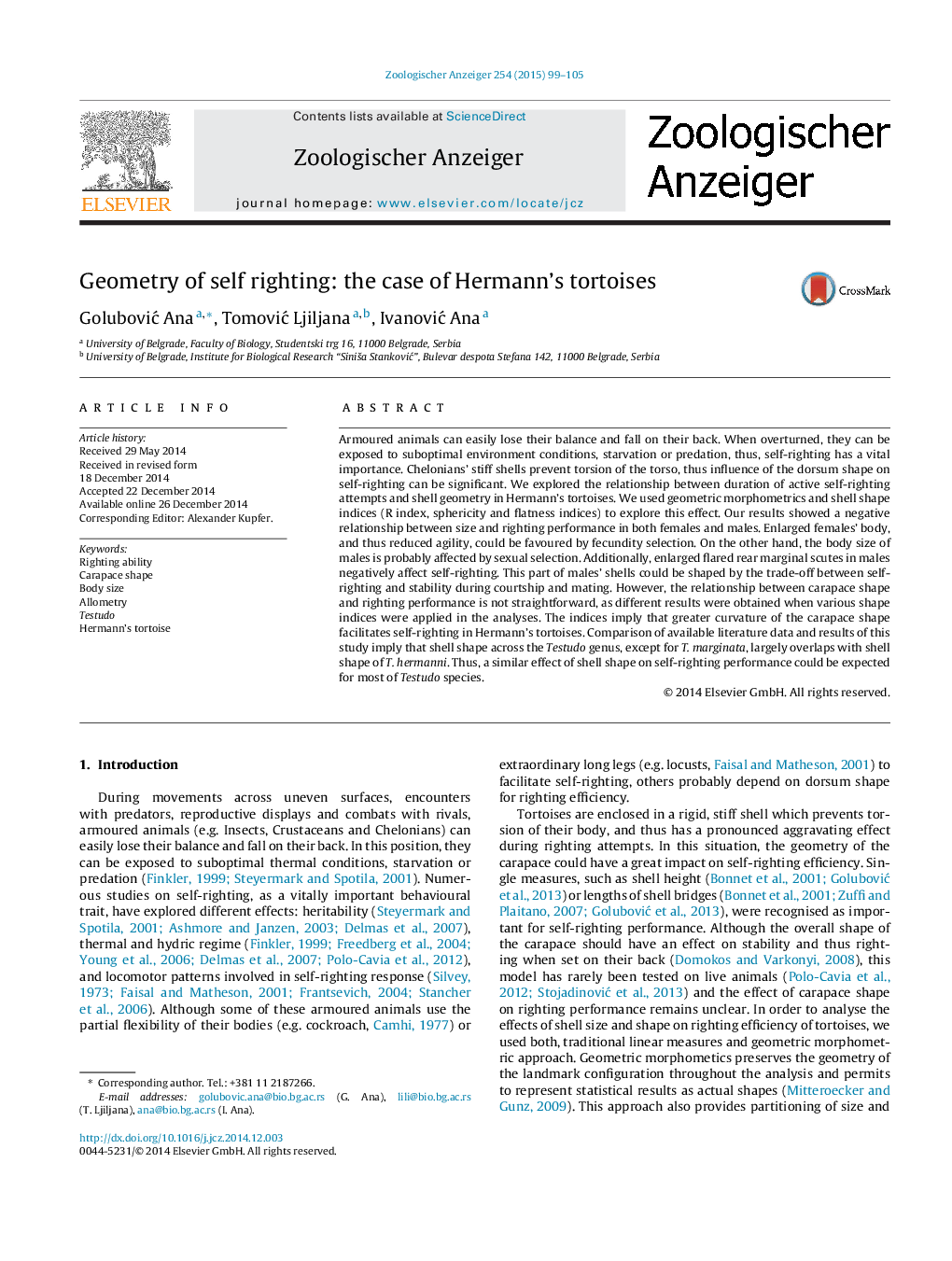| Article ID | Journal | Published Year | Pages | File Type |
|---|---|---|---|---|
| 2790576 | Zoologischer Anzeiger - A Journal of Comparative Zoology | 2015 | 7 Pages |
Armoured animals can easily lose their balance and fall on their back. When overturned, they can be exposed to suboptimal environment conditions, starvation or predation, thus, self-righting has a vital importance. Chelonians’ stiff shells prevent torsion of the torso, thus influence of the dorsum shape on self-righting can be significant. We explored the relationship between duration of active self-righting attempts and shell geometry in Hermann’s tortoises. We used geometric morphometrics and shell shape indices (R index, sphericity and flatness indices) to explore this effect. Our results showed a negative relationship between size and righting performance in both females and males. Enlarged females’ body, and thus reduced agility, could be favoured by fecundity selection. On the other hand, the body size of males is probably affected by sexual selection. Additionally, enlarged flared rear marginal scutes in males negatively affect self-righting. This part of males’ shells could be shaped by the trade-off between self-righting and stability during courtship and mating. However, the relationship between carapace shape and righting performance is not straightforward, as different results were obtained when various shape indices were applied in the analyses. The indices imply that greater curvature of the carapace shape facilitates self-righting in Hermann’s tortoises. Comparison of available literature data and results of this study imply that shell shape across the Testudo genus, except for T. marginata, largely overlaps with shell shape of T. hermanni. Thus, a similar effect of shell shape on self-righting performance could be expected for most of Testudo species.
